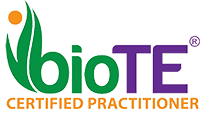Along with keeping up with recommended pap smearing screenings, there is no question that women need an annual well-woman exam with their healthcare provider for other important screenings, evaluations, and immunizations based on their age and individual risk factors. An annual well-woman exam visit is an excellent opportunity for counseling patients about maintaining a healthy lifestyle and decreasing health risks.
A physical exam includes blood pressure, weight, body mass index, palpation of the abdomen and lymph nodes, and also a record of the patients overall health. A pelvic exam, a common part of your visit, includes three parts: 1.) an external inspection; 2.) internal speculum examination; and 3.) a combination internal/external examination. It is important that you begin pelvic exams once you have reached the age of 21. In women younger than 21, an internal pelvic exam is not recommended unless she is sexually active, has signs of menstrual disorder, experiencing vaginal discharge or pelvic pain, or other reproductive-related symptoms.
The clinical breast exam (CBE) is another important part of the well-woman exam and is best to have done on a yearly basis. In addition, women age 40 and older need yearly mammograms. Patients should also have a good understanding on how to perform a monthly self-breast exam (SBE) at the conclusion of the visit.
